Neergaard's Sunbird
Posted: Sun Mar 23, 2014 2:46 pm
782. Neergaard's Sunbird Cinnyris neergaardi (Bloukruissuikerbekkie)
Order: Passeriformes. Family: Nectariniidae
Description
Lentgh 11 cm, mass 6 g. A small sunbird with short, decurved bill. Green and black with scarlet band on the lower chest fringed blue on the upperside. Blue rump.
Breeding male: (It is not known if the male has an eclipse plumage) Upperparts iridescent green, except for the upper tail coverts (iridescent blue) and the tail, flight feathers and greater wing coverts (blackish). The neck, throat and upper breast are also iridescent green, and it has yellow pectoral tufts. A narrow, iridescent violet-blue breast band separates the green upper breast from a broad crimson-red breast band. The belly is blackish and the bill is short and slightly decurved.
Female: The upperparts are grey-brown, and the eyebrow is whitish. The tail, flight feathers and greater wing coverts are darker. The underparts are plain grey-buff, with the central belly being yellowish.
Similar species: The Purple-banded Sunbird is similar, but the male has a purple breast-band and does not have yellow pectoral tufts. The female Purple-banded Sunbird has a streaked breast.
Distribution
Restricted to Northern KwaZulu-Natal and Eastern Mozambique. Uncommon in south-eastern Mozambique, with a localised population in the far south of the country marginally extending into KwaZulu-Natal. Neergaard’s Sunbird is endemic to the east coast littoral, extending continuously from just south of Richards Bay northwards to Inhambane in Mozambique. It is usually found in fairly dense dry vegetation, notably the sand forest of Mkuze, False Bay, Ndumu and Tembe nature reserves.
Habitat
Sand forest and thornveld. In inland areas it generally prefers mixed, Acacia and the undergrowth of miombo (Brachystegia) woodland along streams, while its southernmost population is most common in coastal sand forest.
Diet
It mainly feeds on the nectar of trees, creepers, epiphytes and mistletoes but in summer, when nectar is scarce, it may supplement its diet with arthropods and juice sucked from fruit.
Breeding
Monogamous. The nest is built by the female, consisting of an oval-shaped structure with a side entrance concealed by a hanging flap of material. In sand forest it is often built of old-man's-beard lichen (Usnea) and lined with seed pods of Spider flower poison-rope (Stropanthus gerrardii), but in other areas it can be made of tendrils, bark and leaves bound with spider web. It is typically placed in a tree about 4-6 metres above ground, often concealed by a dense clump of old-man's beard lichen or the hanging roots of an orchid. It lays about 2 creamy white eggs speckled with brown, grey and mauve, usually in the period from September-January. The chicks are fed by both parents but mainly the female, on a diet of insects, spiders and arboreal snails.
Call
High-pitched ti-ti-ti-ti.
Status
Locally common resident in suitable habitat, but range restricted. Near-threatened largely due to forest destruction, which has caused its range to contract; it at least has a few reasonably sized populations in protected areas.
Order: Passeriformes. Family: Nectariniidae
Description
Lentgh 11 cm, mass 6 g. A small sunbird with short, decurved bill. Green and black with scarlet band on the lower chest fringed blue on the upperside. Blue rump.
Breeding male: (It is not known if the male has an eclipse plumage) Upperparts iridescent green, except for the upper tail coverts (iridescent blue) and the tail, flight feathers and greater wing coverts (blackish). The neck, throat and upper breast are also iridescent green, and it has yellow pectoral tufts. A narrow, iridescent violet-blue breast band separates the green upper breast from a broad crimson-red breast band. The belly is blackish and the bill is short and slightly decurved.
Female: The upperparts are grey-brown, and the eyebrow is whitish. The tail, flight feathers and greater wing coverts are darker. The underparts are plain grey-buff, with the central belly being yellowish.
Similar species: The Purple-banded Sunbird is similar, but the male has a purple breast-band and does not have yellow pectoral tufts. The female Purple-banded Sunbird has a streaked breast.
Distribution
Restricted to Northern KwaZulu-Natal and Eastern Mozambique. Uncommon in south-eastern Mozambique, with a localised population in the far south of the country marginally extending into KwaZulu-Natal. Neergaard’s Sunbird is endemic to the east coast littoral, extending continuously from just south of Richards Bay northwards to Inhambane in Mozambique. It is usually found in fairly dense dry vegetation, notably the sand forest of Mkuze, False Bay, Ndumu and Tembe nature reserves.
Habitat
Sand forest and thornveld. In inland areas it generally prefers mixed, Acacia and the undergrowth of miombo (Brachystegia) woodland along streams, while its southernmost population is most common in coastal sand forest.
Diet
It mainly feeds on the nectar of trees, creepers, epiphytes and mistletoes but in summer, when nectar is scarce, it may supplement its diet with arthropods and juice sucked from fruit.
Breeding
Monogamous. The nest is built by the female, consisting of an oval-shaped structure with a side entrance concealed by a hanging flap of material. In sand forest it is often built of old-man's-beard lichen (Usnea) and lined with seed pods of Spider flower poison-rope (Stropanthus gerrardii), but in other areas it can be made of tendrils, bark and leaves bound with spider web. It is typically placed in a tree about 4-6 metres above ground, often concealed by a dense clump of old-man's beard lichen or the hanging roots of an orchid. It lays about 2 creamy white eggs speckled with brown, grey and mauve, usually in the period from September-January. The chicks are fed by both parents but mainly the female, on a diet of insects, spiders and arboreal snails.
Call
High-pitched ti-ti-ti-ti.
Status
Locally common resident in suitable habitat, but range restricted. Near-threatened largely due to forest destruction, which has caused its range to contract; it at least has a few reasonably sized populations in protected areas.
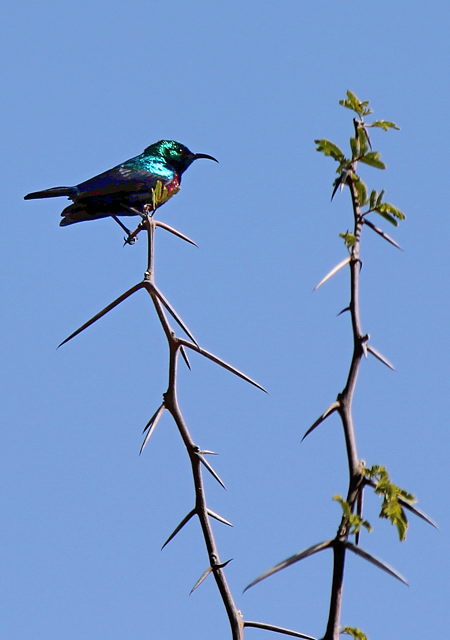
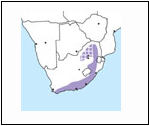
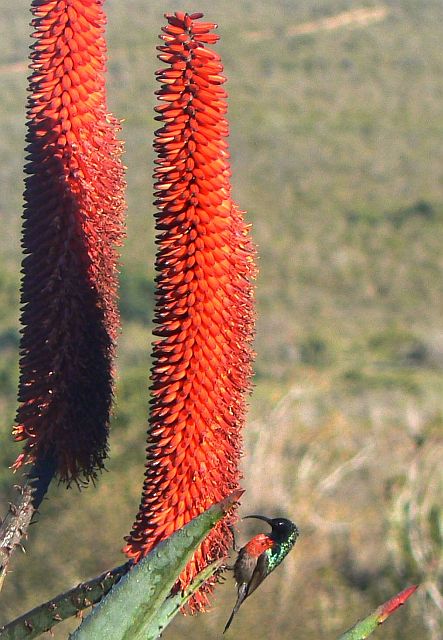 © nan
© nan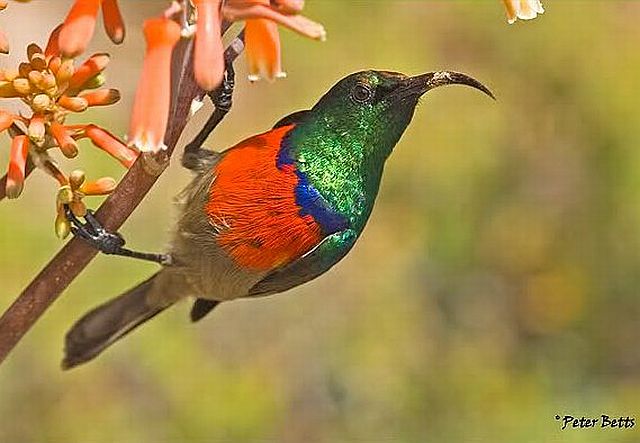 © Peter Betts
© Peter Betts © Sharifa
© Sharifa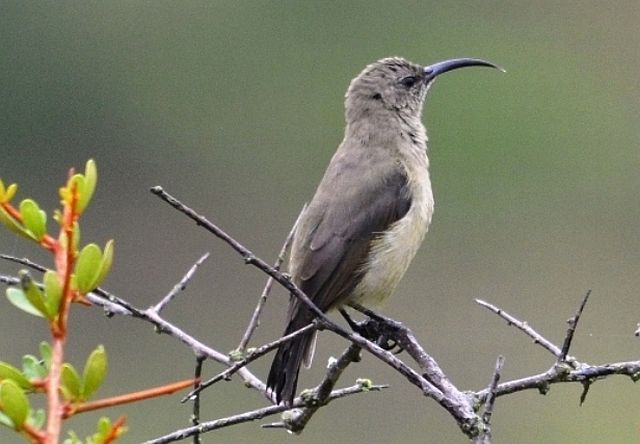 © Mel
© Mel © okie
© okie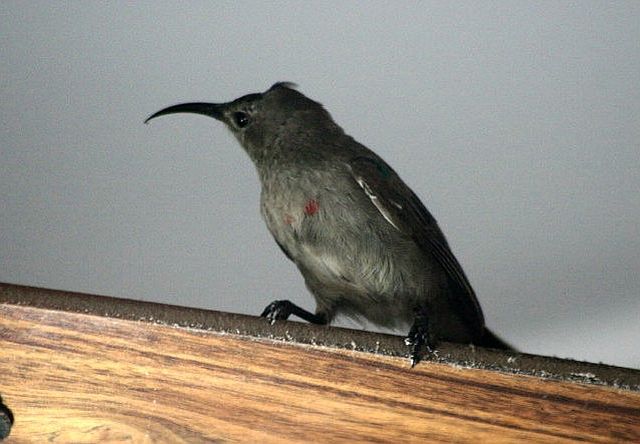 © okie
© okie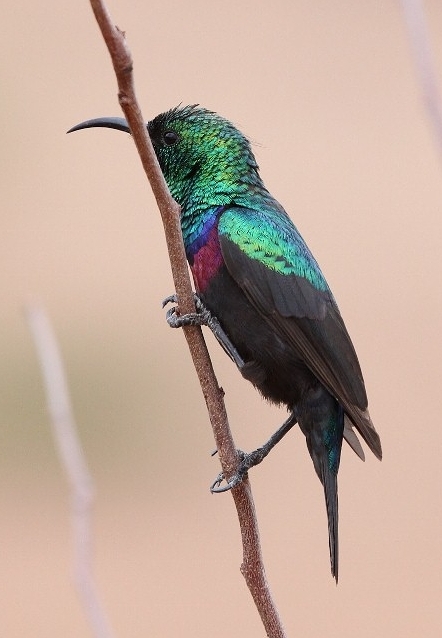

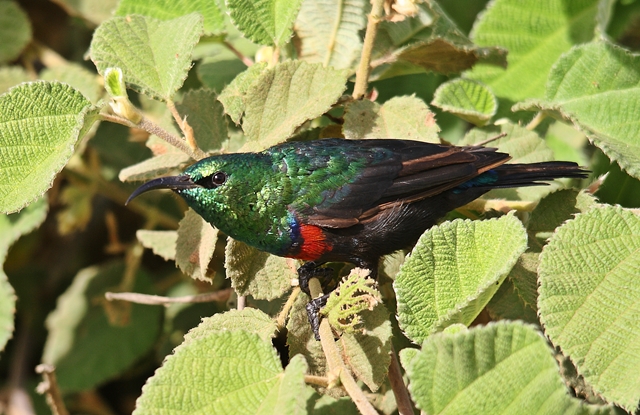 © Flutterby
© Flutterby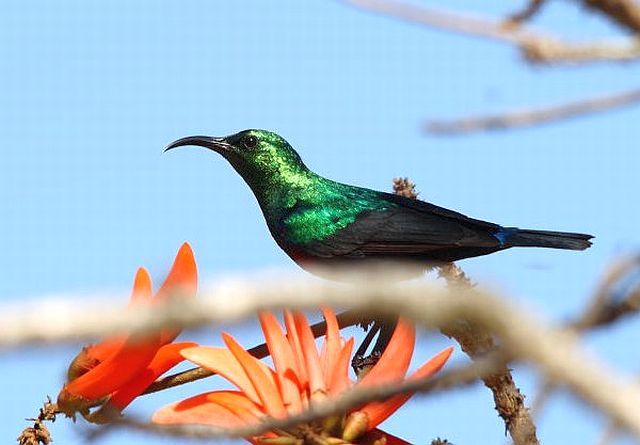 © Flutterby
© Flutterby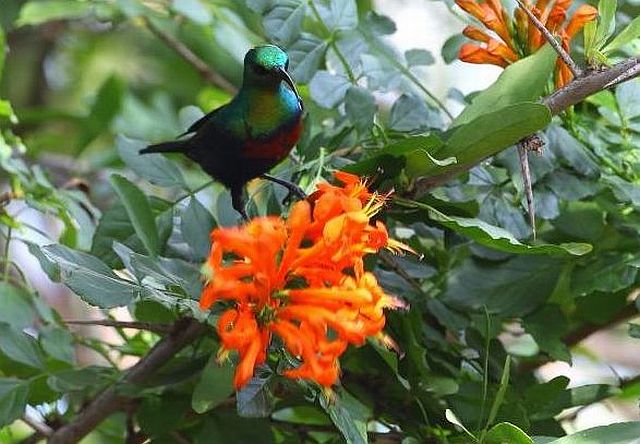 © Sharifa
© Sharifa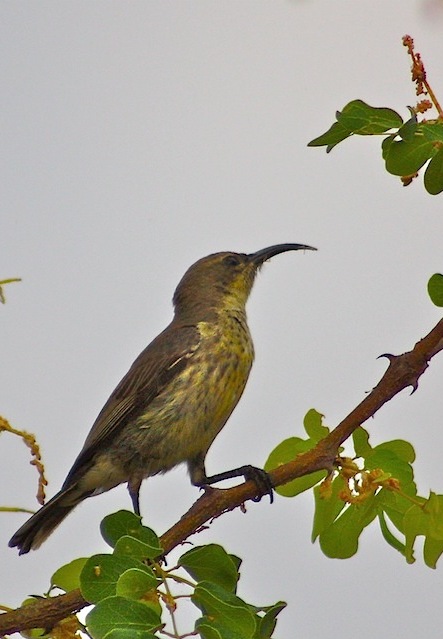 © ExFmem
© ExFmem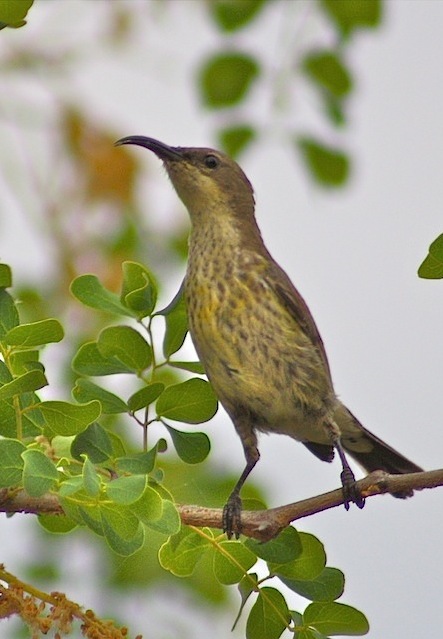 © ExFmem
© ExFmem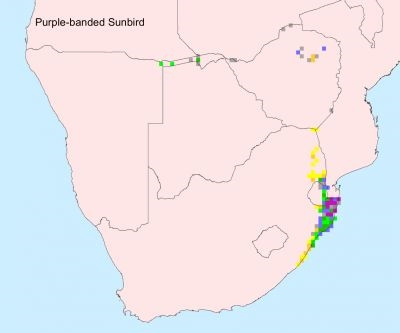
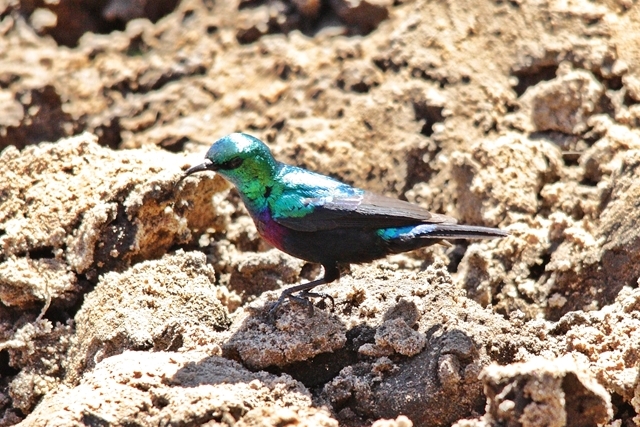 © Flutterby
© Flutterby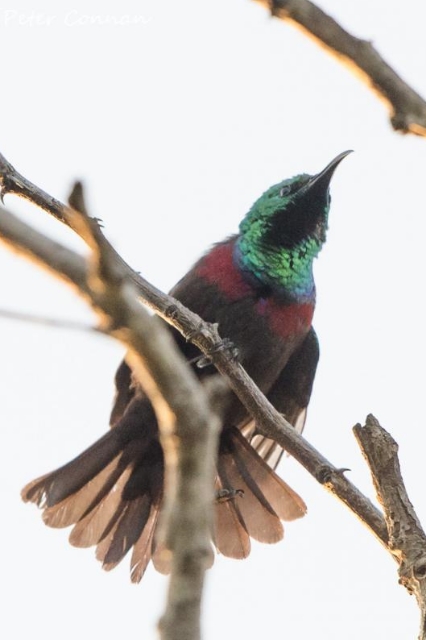 © Peter Connan
© Peter Connan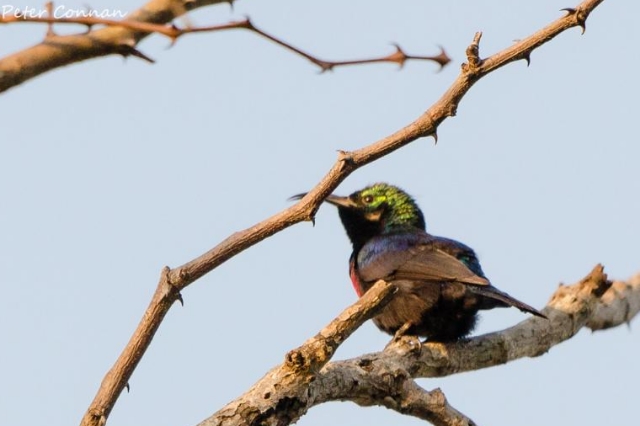 © Peter Connan
© Peter Connan © Peter Connan
© Peter Connan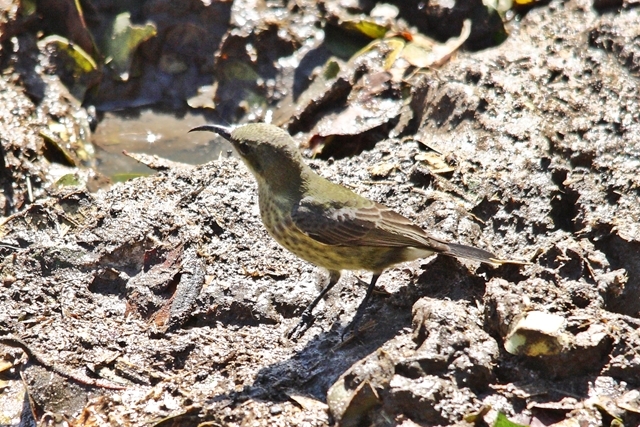 © Flutterby
© Flutterby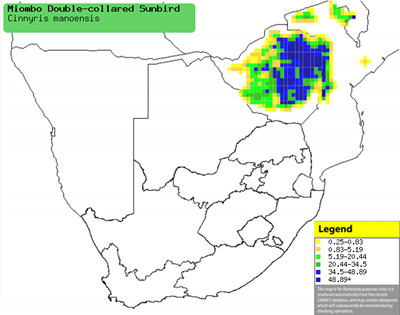
 © Dindingwe
© Dindingwe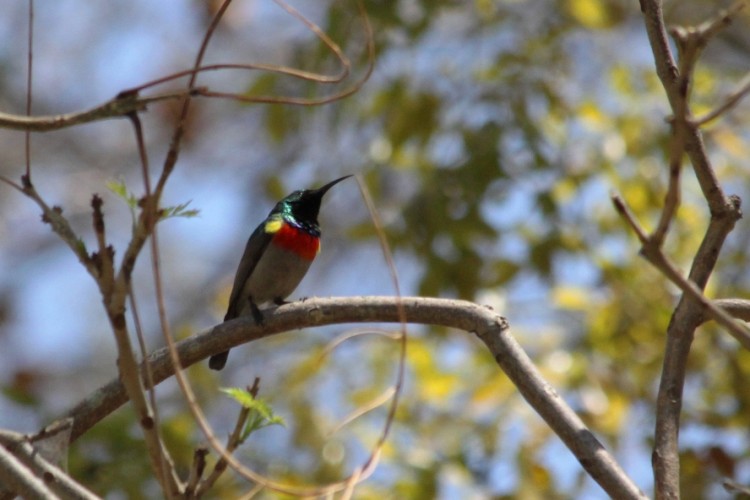 © Dindingwe
© Dindingwe